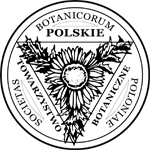Abstract
In the paper the structure of flora in 1st and 10th year of arable land lying fallow has been presented. Phytosociological observations were carried out on two fields lying on different soil (rendzina and podsolic soil). Analyses of flora concerned geografical and historical groups, origin of apophytes as well as living forms of plants. The conducted research showed that in the flora of fallows, with the time of exclusion of arable land from the agricultural use, there was incease in the number of apophytes and decrease of antropophytes, especially archeophytes, independent of types of soil. Ruderal apophytes, dominating in early stage of succession, gave way to meadow apophytes on the heavy soil, whereas segetal apophytes took place of forest and bushwood species on the light soil. In phytocenosis of multi-year fallows on the light and heavy soil, among the living forms, the most numerous were represented by hemicryptophytes, which replaced the dominating terophytes on the one-year fallow.
Keywords
fallows; geographical and historical groups; living forms of plants






